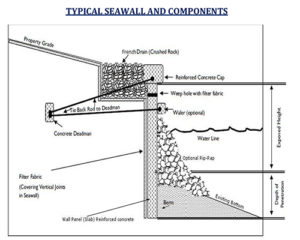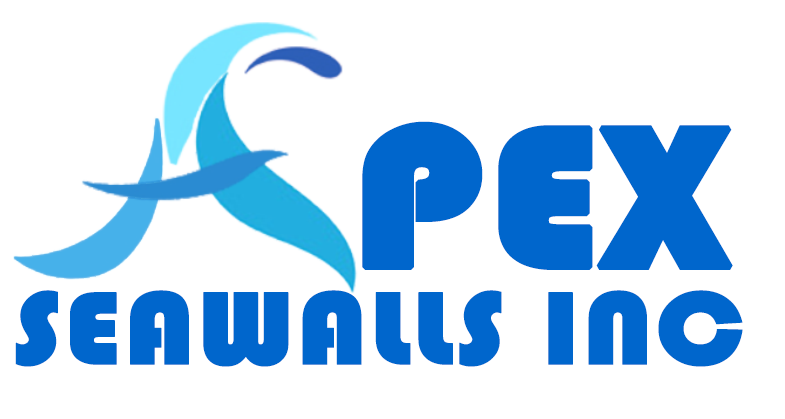What is a Seawall?
What is a Seawall?
A seawall or bulkhead is a structure which separates a body of water from the adjacent land. While the appropriate term for most of the structures in South Florida is “bulkhead” (a straight wall) residents and visitors commonly use the term “seawall” instead. Seawalls perform a number of functions which are important to property owners:
- Protect property from loss of land mass into the water due to erosion, current, and wave action
- Help maintain the proper water depth in adjacent waterways
- Delineate between private property (the owner’s land) and public property (the water)
- Define the width of a waterway for purposes of dock and accessory construction
- Contribute to the stability and value of waterfront property
Seawalls are intended to keep “land in” rather than the “water out”. A seawall is actually not one unit; rather it is designed and constructed from a number of distinct components such as panels, cap, tieback rods, and deadmen. Generally, a seawall consists of a series of interlocked panels (concrete, composite, PVC, or metal) that are not watertight. A cap (usually concrete) ties individual panels together. The panels extend vertically from below the water floor (berm) to above the land elevation. Traditional construction methods include tie-back rods that anchor the vertical structure to a poured concrete structure embedded in the landside soil that is called a deadmen. The tiebacks and deadmen are vital to maintain the wall in an upright position and prevent it from falling into the water. Many, but not all seawalls on throughout South Florida have wood or concrete pilings spaced along the waterside perimeter of the wall to minimize sagging or leaning into the water. Seawalls are designed with weep holes to allow water collecting behind the panels to drain and relieve (hydrostatic) pressure on the structure. A special drain system called a “French Drain” is sometimes required by local municipal code. Its purpose is to facilitate drainage from behind the slabs. In addition, commercially available drain systems are sometime installed to increase drainage capability. Each of these features can help to prolong the life of seawalls. To help visualize the seawall structure please see image below:

1 comment
Leave a Reply
You must be logged in to post a comment.

A WordPress Commenter
June 12, 2024Hi, this is a comment.
To get started with moderating, editing, and deleting comments, please visit the Comments screen in the dashboard.
Commenter avatars come from Gravatar.